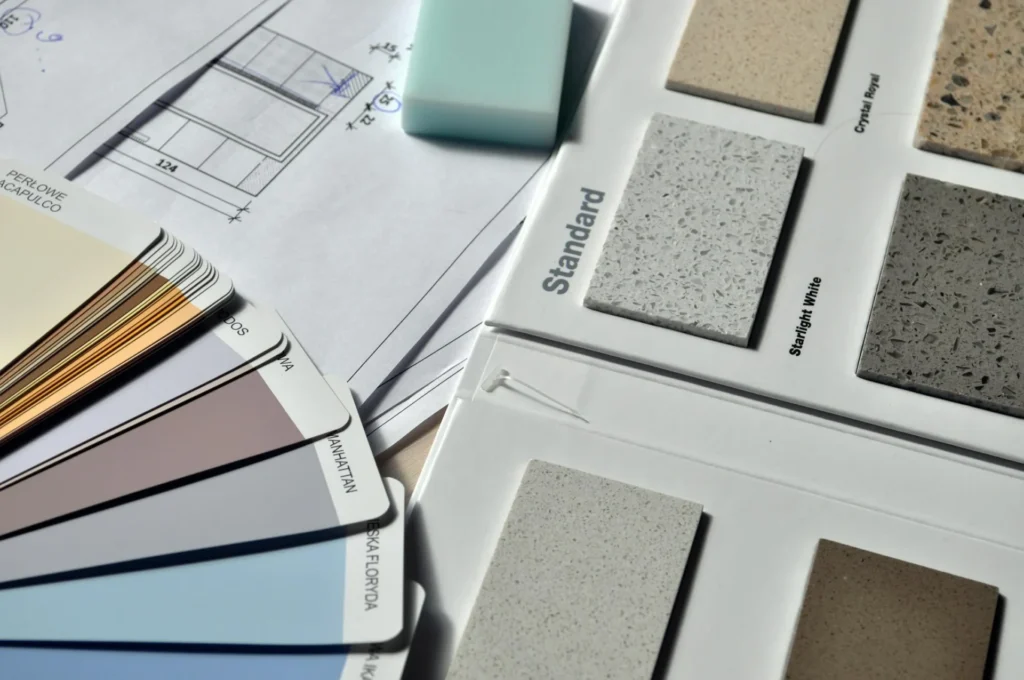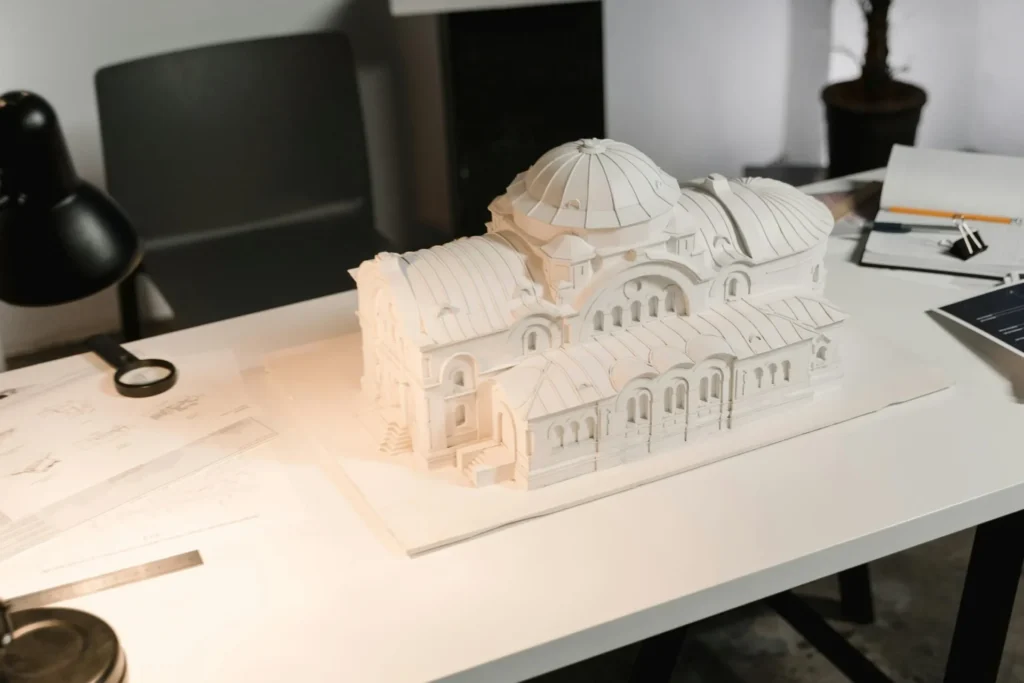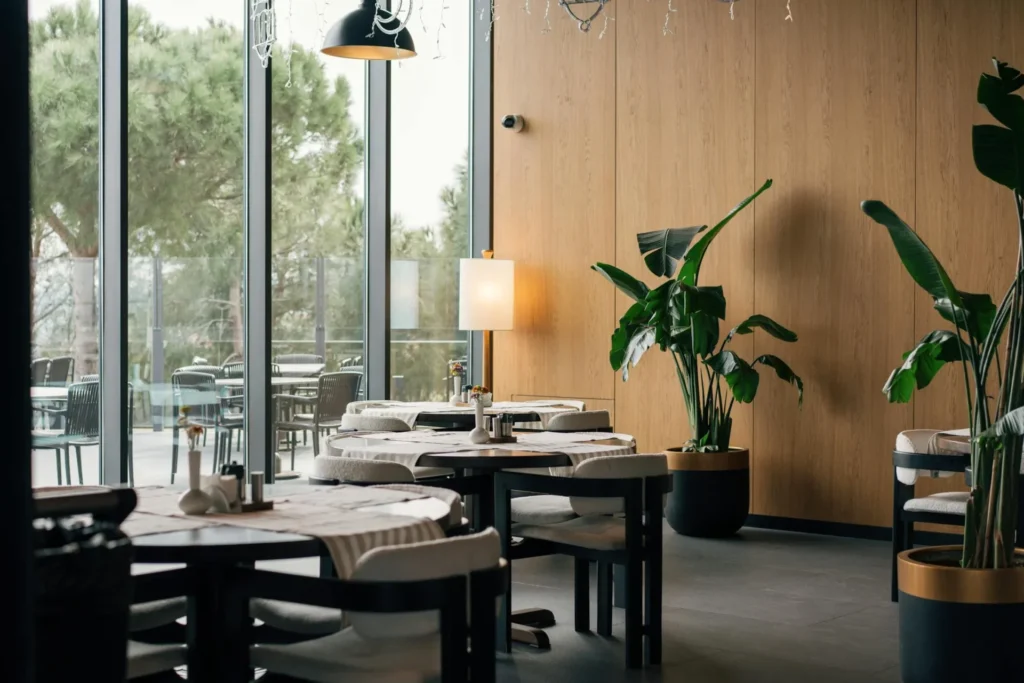Creating a cohesive home design requires experienced remodelers understanding how geometry, color, style, and finishes impact aesthetics. Materials, dimensions, and textures all contribute to the overall appearance and harmony of the project. Work with a designer to transform your home remodelling ideas into tangible design elements, furnishings, and decorations.
Steps to Achieve a Cohesive Home Design
| Step | What to Do | Why It Matters |
|---|---|---|
| Choose a Theme | Pick a style (modern, rustic, classic) to guide design choices. | Keeps the look consistent throughout the home. |
| Stick to a Color Palette | Select 3-5 colors that complement each other. | Creates harmony and avoids clashing tones. |
| Use Similar Materials | Incorporate wood, stone, or metal in multiple areas. | Connects different rooms visually. |
| Maintain Consistent Flooring | Use the same or similar flooring across rooms. | Enhances the flow from one space to another. |
| Match Hardware & Fixtures | Choose similar door handles, cabinet knobs, and light fixtures. | Ties the design elements together. |
| Balance Patterns & Textures | Mix textures like wood, metal, and fabric but don’t overdo it. | Adds depth without overwhelming the space. |
| Keep Furniture & Decor Aligned | Ensure furniture styles and decor complement each other. | Prevents a mismatched or cluttered look. |
Here’s how to create a cohesive design when remodeling your home:
Color Palette
Sticking to a consistent color palette is one way to create a cohesive design in your home remodeling project. Start by choosing a neutral base color that allows you to add more vibrant complementary hues. Use repetition throughout the space, choosing decorations and fixtures with similar colors or tones in different rooms of your home. Test your preferred colors in different lighting conditions to find tones that maintain a harmonious look from room to room.

- Remodeling companies generate three-dimensional visuals of your design before beginning the project.
- These mock-ups allow you to experiment with different options until you find the right color palette for your home.
- Choose materials and finishes with complementary tones, and maintain the same tone or materials for flooring, cabinetry, and countertops to maintain uniformity.
- Use the same finishes and accents across your hardware and fixtures to emphasize the color palette.
Architectural Elements
Your home’s architectural elements, like doorways, windows, and woodwork, provide a foundation for your design and bring everything together. You can add contrast to the architecture with unique furniture, lighting, and accent walls, but the foundational elements should remain consistent and cohesive. Keep the woodwork cohesive by installing pieces from the same collection or supplier. Use consistent measurements to achieve matching dimensions and appearances.

- If your home has rectangular doorways, swapping one of them for an arched doorway can disrupt the design’s cohesion.
- Keeping architectural elements cohesive allows you to make slight variations in each room while maintaining the overall design.
- Using the same shapes, patterns, and textures creates consistency and unifies the look.
Design Style
Interior and exterior designs have specific styles, like modern, traditional, minimalist, or farmhouse. You can customize these styles or mix multiple designs to create a unique style. Defining your style before beginning a renovation allows you to create a consistent theme that ties all the elements together.
If you prefer classic styles, choose hardwoods, rustic finishes, natural stones, and designer décor. For modern styles, select standard manufactured pieces, polished finishes, and trending luxury decorations.
Use consistent styling for furniture, cabinetry, shelves, textiles, and décor. Use open sightlines and maintain the flooring for a seamless transition from room to room. You can use rugs, mats, and artwork to give each room a distinguished style in open-concept layouts.
Lighting and Ambiance

Light creates smooth visual transitions, highlights focal points like artwork, and provides accents and contrasts. Choose a consistent lighting plan, layering your main light with ambient, task, and accent light fixtures. The main lighting fixtures should remain consistent throughout your home. Choose similar materials, finishes, textures, and installation positions. Task lighting fixtures may have distinct designs and installation locations based on their applications.
Use accent lights to integrate unique colors that complement the design style. Select lamps, pendants, and chandeliers with different textures and finishes to enhance visual appeal. You can also maximize natural light by incorporating large windows and mirrors into your renovation plans. Natural light can make a room feel more spacious and airy, making your home feel more welcoming.
Work With a Home Remodeling Company

Remodeling a home involves changing various aspects, like fixtures, furnishings, colors, and décor. An experienced remodeling team will help you create effective plans and find quality materials for your project. Please speak to a home remodeling company today to learn more about their services.

